
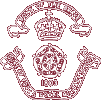

 |
 |
|
 |
||
| Navigation links at the bottom of this page | |||||||||||||||||||||||||||||||||||||||||||||||||||||||||||||||||||||||||||||||||||||||||
| George Cecil Gardiner DSO, DFC | |||||||||||||||||||||||||||||||||||||||||||||||||||||||||||||||||||||||||||||||||||||||||
The turn of the 20th Century generation produced a remarkable crop of heroes and achievers, including Debroy Somers (see the 1952 article) and General Sir Archibald Nye (see 1967 Archibald Nye). One day, without doubt, readers of this history site – if it is still going – will read of our remarkable Dukie women. Whether they'll turn out to be writers, artists, pilots or astronauts remains to be seen. To this writer, at least, there is no question that they will make their mark. For the moment, we have to stick with the Nye-Somers generation to which it is my pleasure to add the name of George Cecil Gardiner. Born 28 March 1892 in Poonah, India, George Cecil Gardiner was the son of Colour Sergeant Charles Gardiner of the Worcestershire Regiment. The S/Sgt Gardiner's rank was mistaken by one researcher of Group Captain Cecil Gardiner's life for 'Captain', [a correspondent claiming connection with the Gardiners, put his rank at lieutenant] hence, S/Sgt has been mistakenly elevated to commissioned rank. In the admissions register for that period, which is not likely to be incorrect, he is clearly identified identified as Colour Sergeant Gerdiner. As sons of a commissioned officer at that time, the two Gardiner brothers would not have been entitled to admission to either the Royal Hibernian Military School or the Duke of York's Royal Military School. |
|||||||||||||||||||||||||||||||||||||||||||||||||||||||||||||||||||||||||||||||||||||||||
Whatever the circumstances – which might be known once access to the records is made available – George Cecil's record (per National Archives document WO143/23) has him at the school from September 1901 until March 1906. One suspects that he was one of those who left the school at age 14, in his case to join the Royal Irish Regiment. At some time in his career, probably before the outbreak of WWI, he transferred to the 16th (The Queen's) Lancers where he attained the rank of Corporal. He was gazetted (The London Gazette) a second lieutenant for 'service in the field' 19 October 1915 and then, one must surmise, he was seconded from his unit to the Royal Flying Corps where he took pilot training. At that time, the RFC was a military unit under Army command. Following his training, Gardiner served in 47 Squadron as a lieutenant and flew the B. E. 12 - see below. |
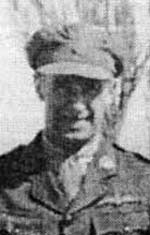 |
||||||||||||||||||||||||||||||||||||||||||||||||||||||||||||||||||||||||||||||||||||||||
Group Captain George Cecil Gardiner |
|||||||||||||||||||||||||||||||||||||||||||||||||||||||||||||||||||||||||||||||||||||||||
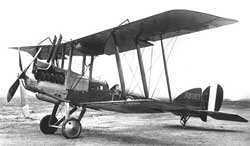 |
As Gardiner was flying the B.E. 12 in October 1917, he was probably flying it as a bomber pilot. He was credited together with 2/Lt A. F. Buckley for downing an Albatros C over Beles, somewhere in the Balkans. |
||||||||||||||||||||||||||||||||||||||||||||||||||||||||||||||||||||||||||||||||||||||||
The B.E.12, developed as a fighter to combat the Fokker Eindecker was a disappointing aircraft and by September 1916 was being used as a light bomber |
From the B.E.12, which RFC personnel apparently did not like, he moved to the D.H. 2. Gardiner was wounded in action in October, but was up and flying again by the next month. | ||||||||||||||||||||||||||||||||||||||||||||||||||||||||||||||||||||||||||||||||||||||||
The D.H.2 biplane was an unusual design for its time, its propeller being mounted behind the fuselage. This arrangement permitted the use of a forward-firing machine gun. The D.H.2, despite its flimsy appearance, was highly maneuverable and had an excellent rate of climb. It was in a D.H.2 that Lt. Gardiner, in November 1917, shot down an Albatros III. As a commentator on the performance of the DH2 noted. '... the D.H.2 helped end the "Fokker Scourge." Well past its prime and almost two years after its introduction, some squadrons of the Royal Flying Corps were still equipped with D.H.2s.' Forty-seven Squadron in which Gardiner served was one of those still equipped with D.H.2s |
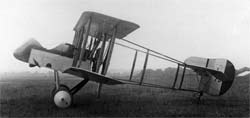 |
||||||||||||||||||||||||||||||||||||||||||||||||||||||||||||||||||||||||||||||||||||||||
The D.H.2 biplane fighter with its 'push' propeller was considered superior to the Fokker Eindecker III, a German monoplane fighter. |
|||||||||||||||||||||||||||||||||||||||||||||||||||||||||||||||||||||||||||||||||||||||||
The Royal Air Force came into existence 1 April 1918, the same day that saw the formation of 150 Squadron in part from 17 and 47 Squadrons. The newly formed squadron began operations in Salonika, Macedonia. As Ian Cruttenden, associated as a researcher with 150 Squadron, pointed out, Gardiner might well have had connections with his military unit, but would have transferred to the RAF. With 150 Squadron, he flew the famous Sopwith Camel, which was the most successful fighter plane operated by the Royal Flying Corps during WWI. |
|||||||||||||||||||||||||||||||||||||||||||||||||||||||||||||||||||||||||||||||||||||||||
The Sopwith Camel was the 'Spitfire' of WWI, accounting for more victories than any other Allied aircraft during the First World War. The aircraft was credited with destroying 1,294 enemy aircraft. Because of the high torque developed by the Sopwith's rotary engine, however, it required an experience pilot to get it off the ground. It is reported (for details, click here) 395 pilots died from non-combat related causes while flying this aircraft. George Gardiner was not one of them. He survived the war with a undeniably successful record. |
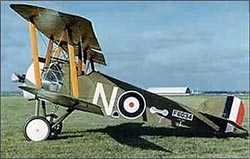 |
||||||||||||||||||||||||||||||||||||||||||||||||||||||||||||||||||||||||||||||||||||||||
The Sopwith Camel in which Captain Gardiner downed four enemy aircraft between June and September 1918 |
|||||||||||||||||||||||||||||||||||||||||||||||||||||||||||||||||||||||||||||||||||||||||
|
|||||||||||||||||||||||||||||||||||||||||||||||||||||||||||||||||||||||||||||||||||||||||
Captain Gardiner spent most of his service in the Middle East, rising in rank to that of Wing Commander. On 12 March 1940, He was promoted to Group Captain and, during his service in the Middle East, as recorded in 216 Squadron Operational Record Book AIR27/13333, he flew General Wavell around his command. He died 30 July 1940 at Helmieh Hospital age 48. The ORB notes that he was buried in the Old Cemetery, Cairo. The Commonwealth War Grave Commission (CWGC) records, however, register his burial site as the Cairo War Memorial Cemetery. The Old Cemetery and the War Memorial Cemetery might be separate burial sites. The CWGC, as Ian Cruttenden also noted, often consolidated to larger, easier to maintain cemeteries. Group Captain George Gardiner was survived by his wife Kathleen August Lyle Gardiner of Tiverton, Devon. I am indebted to Mr. Ian Cruttenden for bringing Group Captain George Gardiner, DSO, DFC. to my attention and for providing much of the information used in this short biography of a fine Dukie. In addition to his DSO and DFC, Gardiner, when a lieutenant (ac Captain) was awarded the Legion of Honour, Croix De Chevalier and, shortly after, the Croix De Guerre and DFC (with palme). Go to Ian's website for more. |
|||||||||||||||||||||||||||||||||||||||||||||||||||||||||||||||||||||||||||||||||||||||||
| ||||||||||
|
© A. W. Cockerill 2011 Site Map Contact me | ||||||||||